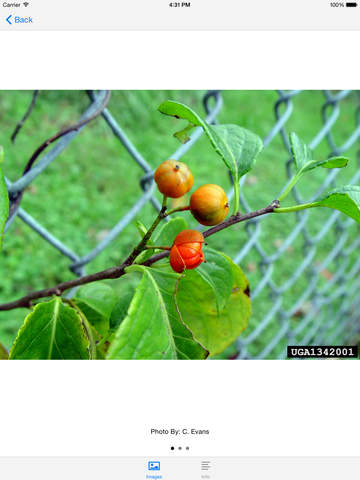Landscape Alternatives for Invasive Plants of the Midwest
Detailed App Info:
Application Description
Invasive plants threaten our environment and economy. They pose an enormous threat to our native plants, animals, and ecosystems, and they cost the United States approximately $35 billion per year (www.invasivespecies.gov).
Although invasive plants are almost always not native to a region, it is important to note that most non-native species are not invasive. We use the following definitions.
Native (indigenous): A species that was present in North American prior to European settlement or has arrived since through natural means of dispersal.
Non-native (exotic, alien, introduced): A species that was brought to North America by humans, either deliberately or accidentally.
Invasive: A non-native whose introduction does or is likely to cause economic or environmental harm or harm to human health (from Federal Executive Order 13112).
People have introduced invasive species both accidentally and deliberately. This app focuses on plant species that are used ornamentally and have become invasive in at least part of the Midwest. Cultivars or hybrids produced from these species may or may not be invasive. In the few published cultivar evaluation studies, some cultivars prove to be more invasive than the parent species, others less or not invasive. We lack research about cultivar invasiveness for many of these species. When we have good evidence about a problematic or relatively benign cultivar, we list those specifically.
Suggested alternatives include both native species and non-native species that currently show no signs of becoming invasive.
Requirements
Your mobile device must have at least 173.27 MB of space to download and install Landscape Alternatives for Invasive Plants of the Midwest app. Landscape Alternatives for Invasive Plants of the Midwest was updated to a new version. Purchase this version for $0.00
If you have any problems with installation or in-app purchase, found bugs, questions, comments about this application, you can visit the official website of Charles T. Bargeron at http://apps.bugwood.org/.
Copyright © Midwest Invasive Plant Network





